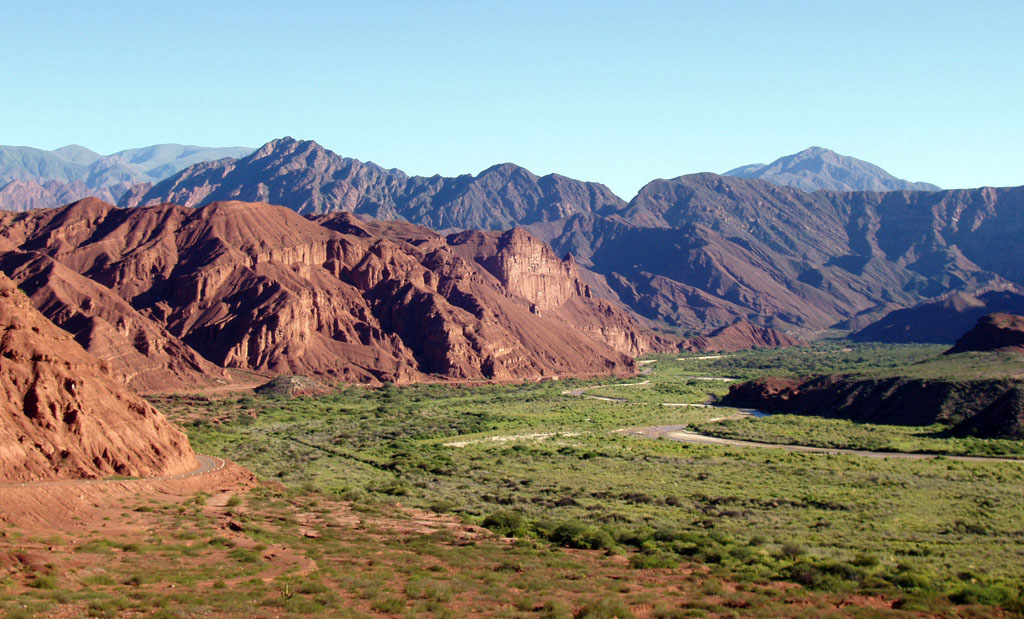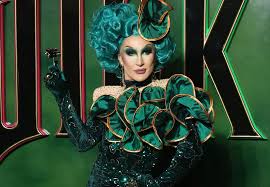ENTERTAINMENT
Mastering NYT Connections Answer: Your Guide to Solving Puzzle #504

Are you hooked on the New York Times’ Connections Answer puzzles and eager to tackle Solution #504? You’re not alone! These brain-teasing puzzles have captivated enthusiasts worldwide, offering a unique blend of challenge and entertainment. In this guide, we’ll walk you through the process of solving today’s puzzle, providing hints and insights to help you master the art of Connections.
Why NYT Connections Are Worth Your Time
Before we jump into today’s puzzle, let’s explore why Connections puzzles are more than just a fun pastime. These puzzles engage your mind, improve your critical thinking skills, and offer a rewarding sense of accomplishment upon completion. They’re perfect for anyone looking to sharpen their cognitive abilities while enjoying a mental challenge.
Understanding the Basics of NYT Connections Answer
Connections Answer puzzles require you to identify relationships between different elements to discover hidden patterns. Solution #504 is no exception. The key is to focus on the underlying logic and think outside the box.
Step 1: Analyzing the Puzzle Grid
The first step in solving any Connections puzzle is to carefully analyze the grid. Notice the arrangement of words or numbers and look for any obvious connections. This might involve spotting synonyms, numerical sequences, or thematic links.
Example: In Puzzle #504, if you see words like “apple,” “banana,” and “cherry,” it might suggest a connection related to fruits. Identifying such patterns early can guide you in connecting the dots.
Step 2: Identifying Key Patterns
Once you’ve analyzed the grid, the next step is to identify key patterns. Look for recurring themes or categories that could group certain elements together. Often, this involves a mix of lateral thinking and logical deduction.
Tip: Pay attention to elements that don’t seem to fit anywhere else. These outliers often hold the key to uncovering hidden connections.
Step 3: Making Logical Connections
With the patterns in mind, start making logical connections between the elements. This might involve drawing lines on the grid or using a notepad to jot down potential connections. The goal is to group related elements together based on the patterns you’ve identified.
Evidence: Puzzle enthusiasts often find that keeping a written record of their thought process helps clarify complex connections. It also provides a reference for double-checking your conclusions.
Step 4: Testing Your Hypotheses
Once you’ve formed connections, it’s time to test your hypotheses. Review your groups and consider if they make sense within the context of the puzzle. Are there any elements that still don’t fit? Are there alternative Connections Answer you might have missed?
Example: In Puzzle #504, if you’ve grouped “apple,” “banana,” and “cherry” as fruits, but still have “tomato” left ungrouped, consider if “tomato” might belong to a separate category like “vegetables.”
Step 5: Finalizing Your Solution
After testing your connections, finalize your solution by arranging all elements into cohesive groups. Ensure that each group is logically consistent and aligns with the patterns you’ve identified.
Remember, there is often more than one way to solve a Connections puzzle. The key is to find a solution that satisfies the puzzle’s requirements while challenging your cognitive skills.
Conclusion
Solving NYT Connections Puzzle #504 is a rewarding exercise that sharpens your mind and enhances your problem-solving abilities. By following the steps outlined in this guide and applying your creativity and logic, you’ll be well-equipped to crack even the most challenging puzzles.
Feeling inspired? Invite your friends to join you in this intellectual adventure. Share your passion for Connections Answer puzzles and encourage them to give it a try. Who knows, you might just spark a new obsession!
ENTERTAINMENT
The Meaning of “Mountain”: More Than Just a Geographic Feature

Mountains are some of the most striking natural features on Earth. They have inspired countless legends, served as barriers and pathways for exploration, and are deeply woven into the culture and history of human civilization. But what exactly does the term “mountain” mean? And how do we define something so vast and variable?
This blog post explores the definition of “mountain” according to the Cambridge Dictionary, examines its physical and symbolic significance, and dives into the nuances that make mountains more than just towering landforms.
From their role in geography to their representation in art and literature, prepare to climb to new heights of understanding!
What Is a Mountain, Exactly?
On a literal level, the Cambridge Dictionary defines a mountain as “a raised part of the Earth’s surface, much larger than a hill, the top of which might be covered in snow.” While straightforward, this definition opens the door to important questions.
For instance:
- What makes a mountain different from a hill?
- How much “larger” is large enough to be called a mountain?
- Are height and size the only factors, or do geology and cultural perspective also play a role?
The Geographical Characteristics of a Mountain
From a scientific standpoint, a mountain is typically defined by geographical and geological criteria. Most countries and scholars agree that mountains must:
- Rise significantly above their surrounding terrain
While there is no universal standard, many mountains must have an elevation of at least 600 meters (about 2,000 feet) above sea level.
- Be formed naturally through geological forces
Mountains are often created by tectonic activity, volcanic eruptions, or erosion. For example, the Himalayas were formed by the collision of the Indian and Eurasian tectonic plates.
- Exhibit steep slopes and rugged features
Unlike rolling hills, mountains are characterized by dramatic vertical elements.
Is There an Official Height?
Interestingly, there is no universally agreed-upon height that separates hills from mountains. For example:
- The United Kingdom used to define any feature over 1,000 feet (300 meters) as a mountain, but this concept has largely fallen out of official use.
- The U.S. Geological Survey, on the other hand, takes a broader perspective by focusing on the general shape and steepness, rather than exact measurements.
This variability highlights the subjective nature of categorizing landforms.
Beyond Size and Scale
The meaning of “mountain” goes beyond physical characteristics. A mountain’s definition can vary depending on cultural and symbolic contexts. For some people, a mountain is more than an impressive geological feature—it’s a spiritual symbol, a challenge to conquer, or even a source of literal and metaphorical inspiration.
Mountains in Culture and Symbolism
Throughout history, humans have imbued mountains with meaning:
- Spiritual and Religious Significance
Many cultures see mountains as sacred or as places where the terrestrial meets the divine. For example, Mount Olympus in Greek mythology was the home of the gods, and Mount Kailash is sacred in Hindu, Buddhist, Jain, and Bon traditions.
- Symbols of Strength and Endurance
Mountains represent unshakable resilience, often mentioned in literature and art. Phrases like “move mountains” convey the difficulty and perseverance required to achieve something monumental.
- Nature’s Monuments
Mountains are hubs of biodiversity, hosting unique ecosystems at every altitude. They’re not just geological triumphs but ecological ones as well.
The Role of Perspective
The cultural definition of a mountain varies significantly across different regions. For example:
- Mount Kosciuszko in Australia is the highest peak on the continent at 2,228 meters (7,310 feet), yet it might appear modest compared to towering Himalayan giants like Mount Everest (8,849 meters/29,032 feet).
- This means that whether something is considered a mountain can depend not only on objective size but also on local context and cultural significance.
Why Mountains Matter to Us
Mountains are vital in many aspects of human life and the environment. Here’s how:
Environmental Significance
- Climate Regulators: Mountains play a key role in regulating our planet’s climate. They affect weather patterns, capture moisture for water sources, and provide habitats for diverse wildlife.
- Freshwater Supply: Glaciers and snow caps atop mountains are critical for storing freshwater. Roughly 60-80% of the world’s freshwater supply originates in mountainous areas!
Psychological and Emotional Impact
Mountains have long been an escape for individuals seeking peace, reflection, or adventure. Studies show that immersing yourself in nature—especially in the mountains—helps:
- Reduce stress
- Increase mindfulness
- Boost overall well-being
Visiting mountains, hiking their trails, or simply viewing them from a distance offers a sense of clarity and humility.
A Hub for Recreation and Conservation
Mountains provide opportunities for countless activities, from skiing and climbing to wildlife observation. At the same time, they are areas of ecological importance that need protection. Organizations work hard to preserve these environments, balancing human enjoyment with sustainability.
Frequently Asked Questions About Mountains
What’s the tallest mountain in the world?
Mount Everest, located in the Himalayas, holds the title at an incredible 8,849 meters (29,032 feet) above sea level.
Are there underwater mountains?
Yes! Seamounts are underwater mountains that rise from the ocean floor but don’t reach above sea level.
Why do mountains have snow on top?
Even in warmer climates, mountaintops are often cold because the atmosphere gets thinner and holds less heat at higher altitudes.
What Can We Learn From Mountains?
Mountains offer lessons that extend far beyond their ecological and geological significance. They remind us of our place within nature, inspire resilience, and provide literal and figurative peaks to aspire to.
Climbing every mountain, in both the metaphorical and physical sense, teaches us patience, fortitude, and an appreciation for the extraordinary.
ENTERTAINMENT
Fashion News and Trends: Designers, Models, Style Guides

The fashion industry is a vibrant tapestry woven with creativity, innovation, and bold expression. From haute couture runways to street style trends, it shapes not only what we wear but also how we see ourselves in the world. Each season brings fresh collections from established designers while new talents emerge to challenge conventions. In a landscape dominated by ever-changing styles and influences, staying updated is key for any fashion enthusiast.
With social media platforms amplifying voices and visions, the way we consume and interpret fashion has transformed dramatically. Whether you’re drawn to timeless elegance or cutting-edge designs, there’s something for everyone in this dynamic realm. Dive into the latest updates on top designers’ collections, discover rising stars of modeling, explore essential style guides for inspiration—and learn about sustainability efforts that are reshaping the future of fashion. The journey through today’s evolving fashion scene promises excitement at every turn!
Top Designers and their Latest Collections
The fashion landscape is constantly evolving, thanks to visionary designers who push boundaries each season. This year, names like Gucci and Balenciaga have captivated audiences with their bold statements and innovative silhouettes.
Gucci unveiled a collection that marries nostalgia with modernity, featuring vibrant patterns reminiscent of the ’70s but reimagined for today’s wearer. The craftsmanship shines through in every piece, making it a must-see.
Balenciaga has taken an avant-garde approach once again. Their latest line challenges conventional aesthetics by incorporating oversized shapes and unexpected materials. Each design tells a story of rebellion and creativity.
Meanwhile, emerging talents are also gaining traction. Designers such as Telfar Clemens bring inclusivity to the forefront while maintaining edgy visuals that resonate with younger audiences.
Fashion isn’t just about clothing; it’s an expression of identity and culture shaped by these talented creators.
Rising Models to Watch Out For
The fashion world is buzzing with fresh talent. Emerging models are redefining beauty standards and bringing diversity to runways.
One standout is Emma F, known for her striking features and unique style. She’s quickly become a favorite among top designers, making waves in both high fashion and streetwear.
Then there’s Liam J, whose magnetic presence captures attention instantly. His versatility allows him to seamlessly transition between editorial shoots and runway shows.
Another name to note is Sofia R. Her commitment to activism shines through her work, advocating for representation in the industry while showcasing stunning collections.
These rising stars not only embody modern aesthetics but also challenge conventional norms. Their journeys reflect a new era of fashion where individuality reigns supreme. Keep an eye on these models as they continue to rise and inspire change within the industry.
Must-Follow Style Guides for Fashion Inspiration
When it comes to fashion, inspiration is everywhere. A great style guide can turn the mundane into something extraordinary.
Platforms like Pinterest and Instagram are treasure troves of ideas. Users curate stunning boards that showcase everything from street style to haute couture. Following influential accounts allows you to keep your finger on the pulse of current trends.
Look for online magazines that specialize in fashion storytelling. They often feature exclusive interviews with designers and behind-the-scenes looks at runway shows.
Don’t forget about blogs by established influencers or up-and-coming creators. Their unique perspectives can help diversify your wardrobe choices.
Books on style offer timeless advice too, blending classic techniques with modern aesthetics. They encourage personal expression while navigating seasonal trends effectively.
Embrace these guides as tools rather than rules; let them inspire your journey through the ever-changing world of fashion.
The Impact of Social Media on Fashion Trends
Social media has transformed the fashion landscape dramatically. Platforms like Instagram, TikTok, and Pinterest serve as instant runways for emerging trends. Designers now tap into these channels to showcase their collections in real-time.
Influencers play a pivotal role in this shift. Their ability to reach millions with a single post can propel an outfit from obscurity to must-have status overnight. The power of hashtags allows styles to gain traction quickly, creating viral moments that traditional advertising simply can’t replicate.
Moreover, social media fosters community engagement. Fashion enthusiasts share their looks and interpretations, sparking conversations around style choices that transcend geographical boundaries.
This democratization of fashion means anyone can influence trends—from everyday consumers to high-profile celebrities—making the industry more inclusive than ever before. As new voices emerge online, they challenge established norms and encourage innovation across all aspects of fashion design and consumption.
Sustainability in the Fashion Industry
Sustainability is reshaping the fashion industry. Designers are now prioritizing eco-friendly materials and ethical production methods. This shift responds to growing consumer demand for responsible practices.
Brands like Stella McCartney lead the way, showcasing how luxury can harmonize with nature. Organic cotton, recycled fabrics, and biodegradable options are becoming staples in many collections.
Moreover, sustainable fashion isn’t just about materials; it’s also about longevity. Timeless designs encourage consumers to invest in quality over quantity.
The rise of slow fashion movements challenges fast-fashion norms. Shoppers are increasingly seeking brands that focus on craftsmanship rather than fleeting trends.
As awareness grows around climate change and resource conservation, more businesses adopt transparent supply chains. This transparency builds trust with customers who want to support conscious choices in their wardrobes.
Conclusion: The Ever-Evolving World of Fashion
The fashion landscape is one of constant change. Designers push boundaries, infusing fresh creativity into their collections. Models emerge and redefine beauty standards, capturing the essence of modern style.
As we navigate through trends, social media plays a pivotal role in shaping our perceptions. Platforms like Instagram and TikTok bring styles to the forefront, making them accessible to all. Fashion enthusiasts can now curate their looks with just a swipe or click.
Sustainability has also become a crucial topic within this vibrant industry. More brands are embracing eco-friendly practices, understanding that conscious choices matter in today’s world.
Fashion isn’t merely about clothes; it’s an expression of identity and culture. Each season brings new inspirations and influences that resonate with diverse audiences around the globe.
The ever-evolving nature of fashion ensures there’s always something new on the horizon for both aspiring designers and dedicated followers alike. Embrace it—after all, style should be fun and personal!
ENTERTAINMENT
Entertainment Weekly: Your Go-To Source for Pop Culture Buzz

Entertainment has a way of uniting us—whether through shared movie fandoms, the latest music hits, or high-stakes award shows. Staying on top of entertainment news has never been more exciting, and for pop culture enthusiasts, having one trusted source makes all the difference. Enter Entertainment Weekly, the ultimate hub for all things related to movies, TV shows, music, and the latest celebrity scoop.
This post will explore what makes Entertainment Weekly a standout resource for pop culture fans and how it has evolved to meet the dynamic interests of entertainment lovers everywhere.
The Pulse of Pop Culture News
What is Entertainment Weekly?
Launched in 1990, Entertainment Weekly (EW) is a leading entertainment publication that covers the latest in movies, TV shows, music, books, and pop culture trends. Unlike other entertainment magazines that focus heavily on celebrity gossip, EW dives deeper into the creative industries, offering thoughtful reviews, exclusive interviews, and behind-the-scenes features.
Whether you’re a dedicated cinephile or a casual music fan, EW curates everything you need to stay informed and entertained.
Why EW Stands Out
Many platforms provide entertainment coverage, but Entertainment Weekly distinguishes itself through:
- Expert Journalism: A team of seasoned critics and reporters deliver insightful analysis and breaking news.
- Exclusive Content: From film set visits to in-depth conversations with A-list actors, EW offers a close-up perspective.
- Broad Scope: Covering everything from indie darlings to blockbuster hits, EW ensures all entertainment sectors are well represented.
The combination of credibility and variety makes Entertainment Weekly a must-read for anyone passionate about pop culture.
What You Can Expect from Entertainment Weekly
1. Breaking News and Trending Updates
From surprise celebrity announcements to sudden show cancellations, entertainment rarely stays quiet. EW ensures you’re never the last to know. Recent headlines range from shocking series finales to music festival highlights, ensuring readers are always part of the cultural conversation.
Missed a major pop culture moment? With EW’s lightning-fast coverage, you’ll catch up in no time.
2. Movie and TV Show Reviews
Want to know if that new Netflix series is worth the binge? Contemplating a night out at the movies but unsure about the latest blockbuster? Entertainment Weekly’s detailed reviews are your perfect guide.
- Movies:
EW approaches film reviews with a balance of warmth and professionalism. Whether it’s a heartwarming indie or the latest Marvel epic, reviews highlight plot insights, standout performances, and what truly sets a movie apart (if anything).
Example feature: “10 Best Films to Watch This Summer”—a curated watchlist for every mood.
- TV Shows:
TV reviews include everything from Emmy-winning dramas to hidden streaming gems. EW tracks what’s buzzing, updating you on what’s worth adding to your watchlist.
Example feature: “Breaking Down That Shocking Finale of [Insert Show]”.
3. Music Coverage
Music is an integral part of pop culture, and EW never misses a beat. They cover album releases, industry news, and interviews with artists shaping the sounds of tomorrow. Whether you’re into chart-topping hits or underground indie vibes, their music section offers a diverse and comprehensive overview.
Example feature: “Taylor Swift’s Evolution from Country Star to Cultural Icon”.
4. Celebrity Interviews and Features
Who better to share insights into the entertainment world than the stars themselves? Entertainment Weekly’s exclusive interviews provide unmatched behind-the-scenes access to Hollywood’s top talent. Learn what inspires directors, the challenges faced by actors, and the creative process fueling industry legends.
Recent example: “How [Actor’s Name] Prepared for Their Role in [Hit Movie]”.
5. Pop Culture Through a Retrospective Lens
Not everything is about the latest trends. EW also celebrates iconic moments in entertainment history. From revisiting classic films to ranking memorable award show performances, nostalgia plays a key role in its content.
Example feature: “The Greatest Sitcoms of the 90s—Ranked!”.
6. Comic-Con and Festival Coverage
Are you a fan of blockbuster conventions like Comic-Con or major music festivals? Entertainment Weekly is at the forefront of event reporting, offering comprehensive guides, live updates, and recaps for fans who can’t attend in person.
Their coverage goes beyond the obvious, often uncovering hidden highlights and emerging trends within these global events.
The EW Community: Fostering Conversations Among Fans
Entertainment Weekly is more than just a publication—it’s a vibrant community. Through its social media platforms, podcasts, and reader forums, EW sparks conversations that bring pop culture lovers together. From debating fan theories to sharing viewing recommendations, there’s always something to talk about within the EW space.
Highlights of EW’s Community Engagement:
- Interactive Q&A sessions with cast members.
- Social media polls and hot takes on trending entertainment topics.
- Reader-submitted questions featured in interviews or articles.
These initiatives make pop culture feel personal, connecting fans to their favorite stories and creatives.
Why Entertainment Weekly Matters in 2024
The entertainment landscape is shifting at lightning speed, with new streaming platforms, diverse storytelling, and innovative music transforming how we consume media. Amid this constant change, Entertainment Weekly stands as a trusted compass for navigating the overwhelming amount of content available.
Its ability to adapt while remaining true to its journalistic credibility sets EW apart. By highlighting underrepresented voices, celebrating creative storytelling, and holding the industry to high standards, EW remains deeply relevant to its loyal readers.
Make Entertainment News Part of Your Daily Routine
Want to stay ahead of the pop culture curve? Bookmark Entertainment Weekly for your daily dose of what’s happening in movies, TV, music, and more. It’s more than news—it’s about celebrating the stories that shape our culture.
Whether you’re eagerly awaiting exclusive Comic-Con previews or just need fresh recommendations for a lazy Sunday, EW delivers all the entertainment content you need—and then some.
Stay in the know and never miss a moment. Visit Entertainment Weekly today!
-

 BUSINESS9 months ago
BUSINESS9 months agoQuest for Success with QuestHRSC
-

 BUSINESS12 months ago
BUSINESS12 months agoJack Vonarb Private Equity Revolutionizing the Industry
-

 TRADING12 months ago
TRADING12 months agoThe Ultimate Guide to Mastering grossoptions.com
-

 HEALTH5 months ago
HEALTH5 months agoThe Future of Payments in the Medical Industry: Trends and Innovations
-

 GAME11 months ago
GAME11 months agoIncestflox and the Gaming Community’s Divide
-

 HEALTH2 months ago
HEALTH2 months agoAna Bolick SLP Hickory: Leading Pediatric Speech Therapy in North Carolina
-

 NEWS7 months ago
NEWS7 months agoIs Technology Redefining the Experience at nothing2hide.net news?
-

 BLOG11 months ago
BLOG11 months agoExploring the Concept of 200/6: What You Need to Know
